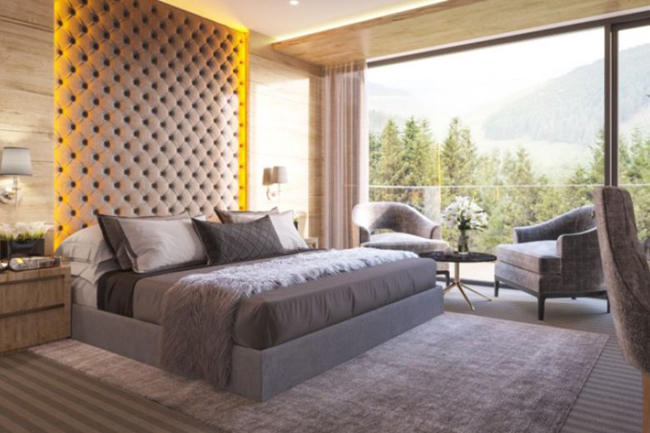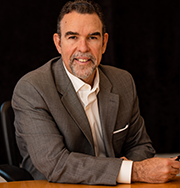
By Jason G. Bryant
When those in the hotel industry talk about selling hotel rooms, the conversation frequently turns to a diatribe on direct bookings—the great need for them, how to get them, how much money to spend on them, and how to keep them. If this industry is to evolve, the direct-booking debate also must change. Brands now dedicate substantial marketing budgets to this effort, and in general, the results have been flat. In 2018, 67% of guests booked via the brand channel. In 2015, it was 68%, according to the annual J.D. Power & Associates North American Hotel Guest Satisfaction Survey (Skift). This two-decade-old conversation has run its course, and now channel strategies that support direct bookings are firmly incorporated into every revenue management and marketing strategy.
Making real progress toward increased hotel revenues, especially amid tremendous increases in supply, requires re-evaluating what we mean when we talk about selling hotel rooms. A more nuanced approach than the "us versus them" of direct channel versus OTA is required. How should hotels sell not just their rooms but also attributes and services? Some hotels have moved toward crafting a unique in-room experience. In 2017, Westin added Peloton bikes to some of its rooms along with streaming cycling classes. La Cantera Resort offers villas that come complete with a personal cart for use on the property. These specialized amenities will appeal to a small percentage of guests, but while adding unusual or exceptional amenities can get marketing attention and perhaps more revenue on some of those rooms, most hotels will find more consistent revenue source by rethinking how they sell existing rooms and amenities. Merchandising hotel offerings can be far simpler than reinventing the rooms when aiming to increase revenue on an ongoing basis.
At its most basic, merchandising refers merely to how a product is sold. For some, the term has become synonymous with identifying a possible opportunity for revenue —legroom, carry-ons, check-in, check-out. However, merchandising, at a higher level, answers the question of what you sell to which guest and when. As legendary advertising executive Morris Hite once said, "Advertising moves people toward goods; merchandising moves goods toward people." By answering the essential questions about the guest, their needs, and the purchase pathway, hotels can move their offerings closer to the right guests rather than spin their wheels trying to draw the guest away from OTAs.
Using machine learning (ML) technology, hotels can uncover which types of guests would be most likely to purchase various room types and attributes, as well as ancillary offerings and services. Further, ML can target at which point during the purchase pathway—at the time of booking, during a pre-stay communication, or on-property—a guest is forecasted to upgrade or add a service, as well as at what price point.
To take full advantage of ML technology, hotels can adopt not just the ML mechanisms but also carefully consider all merchandising opportunities. Take the hotel website, for instance – websites have long been structured to give guests all the available information with long lists of available packages and opportunities to book every available room. This format contributes to decision fatigue and increases cart abandonment rates. However, with aggregated data about consumers via ML, hotels can pinpoint leisure versus business versus solo travelers on their website, for example, and offer a strategic combination of opportunities that are priced according to what they are likely to pay as well as what the market will bear. The algorithm may find that for a particular hotel, family travelers will be more apt to book a suite or an in-room movie. Business travelers will be more likely to book a room with two doubles (one for luggage, one for themselves) and breakfast.
Merchandising more than just configured room types gives guests more opportunities to customize their stay and provides more revenue opportunities for the property. Room attributes like high floors and views, services such as early check-in and late check-out, and special features such as pool cabanas or executive business services, all offer opportunities for not just selling but also highlighting a hotel's many benefits. Some of these are appropriate to offer during the booking phase, but in some cases, hotels will find that presenting these assets during pre-stay communications or upon check-in will increase conversions. Some guests will be more likely to upgrade at check-in than during a pre-stay phase, and ML technology can provide front desk agents exactly which upgrade is most predictable for which guest and tell them precisely what price to offer.
Though most hotels would prefer not to, they frequently resort to offering discounted rates to boost occupancy or achieve an upgrade. Discounting isn't a strategy; it's a last resort and one that can be avoided. Instead, think in terms of how to present the right feature at the most profitable price point. Even millennials who have well-documented price sensitivities will pay for what they want. According to Phocuswire, "Millennials will pay more to get more… more than half of all millennials say they will not book a hotel if it doesn't have the amenities they want."
Finally, don't stop at check-in. Attractively merchandising facilities and services via mobile can drive guests to experience more of the property. The spa, the bar, the restaurant, room service, business amenities, and poolside services can be thoughtfully presented to guests throughout their stay, which can benefit hotels during slow demand times or with under-utilized facilities.
Selling hotel rooms and services seems more complicated than ever; however, it doesn't require delivering exercise equipment on demand to a handful of interested guests or undercutting rates to fill rooms. Instead, changing the way rooms are sold can satisfy the needs of the guest and the hotel. Paring down the offerings and delivering at the perfect time in the journey and at the ideal rate—which requires algorithms that process and understand vast amounts of information that a human can't—elevates the shopping experience in a way that will bring in more satisfied guests and more revenue. The first step is in moving your rooms toward the guest rather than asking the guest to move toward your rooms.


